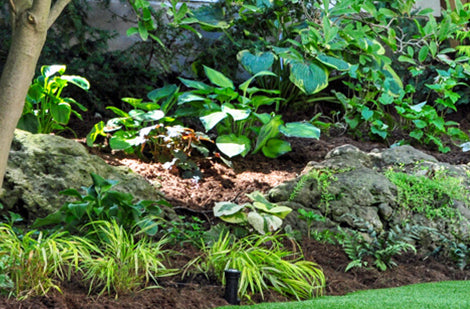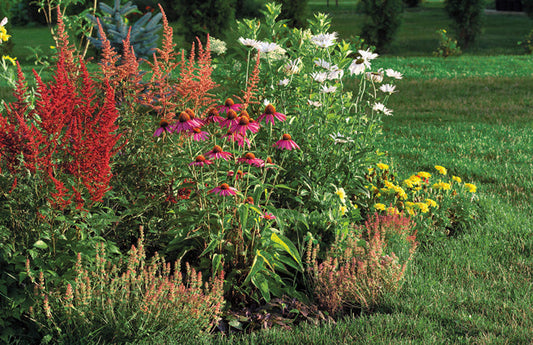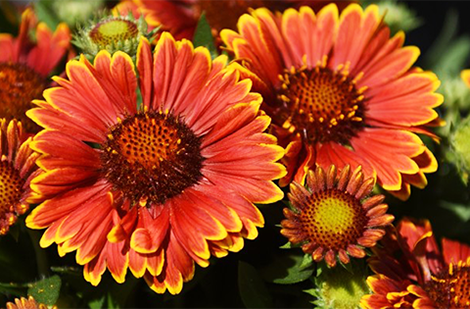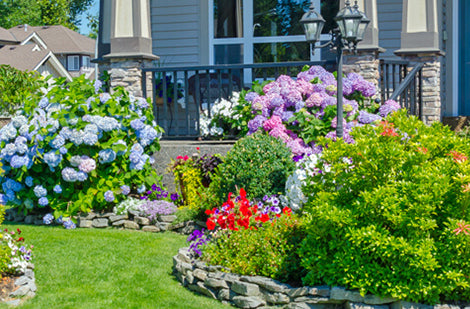Opuntia cespitosa (Opuntia humifusa)
Eastern Prickly Pear
Eastern Prickly Pear
Exposure
- Sun
Rusticity
Bloom time
- June
- July
- August
- Hardy
- Attracts pollinators and butterflies
- Beautiful ground cover
- Edible fruits
- Large yellow flowers
Opuntia humifusa, also known as Eastern Prickly Pear, is a native cactus renowned for its hardiness, beauty, and edible fruits. Adapted to the Quebec climate, it will bring a touch of exoticism and color to your garden.
Vibrant Flowering: In early summer, Opuntia humifusa is covered in waxy yellow flowers, 2 to 3 cm in diameter, with a red center, attracting pollinators. These flowers are followed by red fruits, called prickly pears, which ripen in late summer and are edible when fully ripe.
Flat and Spiny Pads: This cactus forms flat pads, called cladodes, of a bluish-green color. These cladodes are covered in spines, which provide natural protection and a unique texture.
Garden Uses:
- Rock Garden: Opuntia humifusa is ideal for rock gardens, where it will bring a desert touch and interesting texture.
- Native Garden: As a native plant, it fits perfectly into a natural garden and attracts local wildlife. It will attract pollinators and contribute to the biodiversity of your garden.
- Edible Garden: Its fruits, prickly pears, are edible and can be used to make jams, jellies, and other delicacies.
- Xeriscape Garden: Its drought resistance makes it an excellent choice for water-wise gardens.
Growing Tips:
- Exposure: Full sun.
- Soil: Well-drained, poor, sandy or gravelly. Tolerates dry and poor soils.
- Watering: Moderate in summer, very limited in winter. Allow soil to dry between watering.
- Hardiness: Zone 4a (-34°C). Very resistant to the cold Quebec climate.
- Maintenance: No special maintenance required.
Caution: Handle Opuntia humifusa with care due to its spines. Wear thick gloves when planting and maintaining.
Note: The scientific name of this species has been changed from Opuntia humifusa to Opuntia cespitosa.
Plant details
Dimensions
Dimensions
Characteristics
Characteristics
Habit:
- Spreading
Flowering colours:
- Yellow
Plant needs
Plant needs
Watering:
- Low. Water only when the soil is completely dry.
Maintenance:
- Winter protection
Soil requirement:
- Well-drained soil
- Sandy
Features
Features
Resistance:
- White-tailed deer
- Drought
Attract:
- Bees
- Hummingbirds
Use:
- Desert garden
- succulent gardens
- rockery
- Mediterranean garden
Attribute:
- Winter hardy






Related articles
-

Perennials for all occasions
Read the articleOsez créer des associations inédites qui sauront refléter votre personnalité, même si pour cela vous deviez déplacer certaines vivaces pour mieux les mettre en valeur.
-

Landscaping with perennials
Read the articleVariétés à découvrir, la tomate se savoure crue, en sandwich, en bruschetta ou en salade. Cuite, c'est l'ingrédient de base de sauces, soupes et salsas.
-

Perennials proper maintenance: cut and fertilize
Read the articleLa grande popularité des vivaces vient du fait qu'après avoir été oubliées pendant des mois au cours de l'hiver, elles réapparaissent sur la scène plus énergiques et surprenantes que par...
-

How to plant perennials in your garden
Read the articleEn pénétrant au jardin, ce sont souvent les plantes vivaces que l’on remarque en premier. Un massif de sauges, d’hémérocalles, d’astilbes, d’échinacées ou de lavande offre un spectacle d’une beauté...














